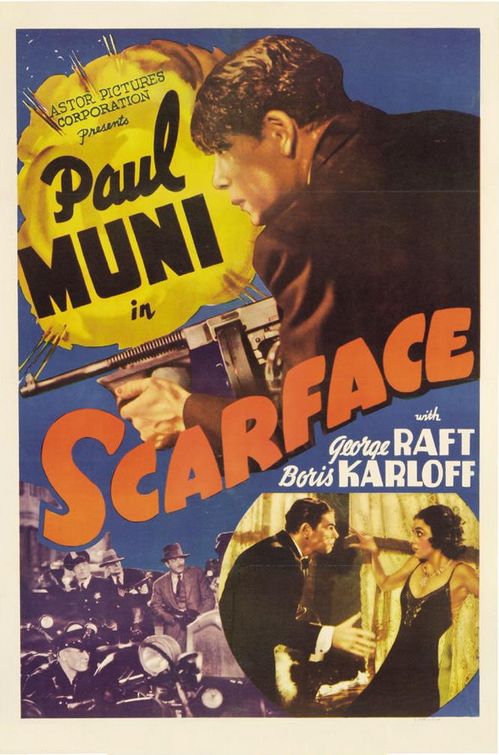 I would like to apologize that I am posting this late, but I was out for a good majority of the day at my Aunt’s house so I didn’t get the chance to post this review there. Now that I have the chance, let’s finish off this month with the 2008 buddy cop movie, “Righteous Kill.” Ken Fox started off his review by saying, “Two actors past their prime spin their wheels playing two over-the-hill New York City detectives on the trail of a serial killer with a poetic streak. The entire movie is one big build-up to a twist that, while not exactly cheating, plays is an awfully cheap trick.”
I would like to apologize that I am posting this late, but I was out for a good majority of the day at my Aunt’s house so I didn’t get the chance to post this review there. Now that I have the chance, let’s finish off this month with the 2008 buddy cop movie, “Righteous Kill.” Ken Fox started off his review by saying, “Two actors past their prime spin their wheels playing two over-the-hill New York City detectives on the trail of a serial killer with a poetic streak. The entire movie is one big build-up to a twist that, while not exactly cheating, plays is an awfully cheap trick.”
The movie starts with a confession. Looking straight in the video camera, “Turk,” played by Robert De Niro, an over 30 year veteran of the NYPD, recounts eleven cold-blooded murders, none that were committed during the line of duty. Fox points out that “Instead, they were the work of an unbalanced rogue cop who, unbeknownst to everyone around him, has become a lethal vigilante, a "street sweeper" ridding the city of rapists, murderers, thugs and pedophiles the justice system has failed to keep off the streets.” A flashback shows the part that triggered this extravaganza of “righteous kills.” Four years prior, Turk and his partner, a detective who is called by his district nickname, “Rooster” (Al Pacino), watches hopelessly as Charles Randall (Frank John Hughes), a man who they both know raped and killed his girlfriend’s (Melissa Leo) 10-year-old daughter, is cleared by a jury of his friends. Furious at the injustice of everything, Turk decides to cross the line and put a gun in Randall’s apartment, thereby setting him up to take the blame for a crime he actually didn’t commit. Rooster, who evidently loves and respects his partner, has his reservations but goes along with it. Not long afterwards, a brutal, unimportant pimp is found shot in a back alley, followed by a pedophile priest and a rapist who got off on a small point. In each incident, a short poem narrating the victims’ sins is found at every crime scene, making Lieutenant Hingis, played by Brian Dennehy, to believe he has serial murderer on his hands. Unaware that the killer is one of his own, Hingis pressures Turk and Rooster to find the killer fast, and they’re soon joined in their case by Detectives Perez (John Leguizamo) and Riley (Donnie Wahlberg, the older brother of Mark Wahlberg) who has been working on a similar case. Perez, however, has a feeling there’s something not quite right about Turk, and soon realizes that all the victims are somehow connected to this veteran cop. Turk’s girlfriend, Detective Karen Corelli, played by Carla Gugino, a detective on the NYPD crime scene unit with a taste for rough love, also begins to suspect that the killer might be someone in that department, especially after she makes a connection between the gun found in Randall’s home and the guns the so-called “Poetry Killer” has been leaving behind.
There’s a subplot involving a drug-dealing blackmailer named Spider, played by rapper Curtis “50 Cent” Jackson, who’s been cleaning money through his Harlem nightclub, but like the main investigation, it doesn’t really go anywhere. Fox pointed out, “The movie's sole raison d'etre is a big, Shyamalan-sized twist that will probably piss off audiences more than blow their minds. To get there, writer Russel Gewirtz -- who also wrote Spike Lee's gimmicky but far superior INSIDE MAN -- director John Avnet sacrifices mystery, suspense, sensible editing and everything else one expects to find in a police thriller just to keep the audience off-guard.” It’s not worth it, and the first real teaming up of De Niro and Pacino (the two scenes in “Heat” apart) is entirely wasted. De Niro seems tired, Pacino’s only half interested, and the resolute New York City mileu only is there to remind you of better days and much better movies.
I don’t really recommend this movie to De Niro and Pacino fans, especially since “Heat” was a much better movie. I think it was because they didn’t share that much screen time with one another, and that’s what made it a great movie. “Righteous Kill” is like a giant slap in the face to those who liked “Heat” thinking that the pairing would work if they shared the entire runtime together. Maybe it would work if it was done right, and hopefully if they do a movie again together where they are on screen the entire runtime of the movie, than it will be done right. They just need to find a good director in order to do that.
Thanks for joining in on “Al Pacino Month.” I hope you enjoyed each of the review, and I’m sorry if I didn’t review movies that you were expecting, but remember, these were movies that I only saw. Look out next month…wait a minute, next month is February. That means it will be time for “Black History Month Part 3.” Stay tuned next month for that because it will be a fun month.








.jpg)

